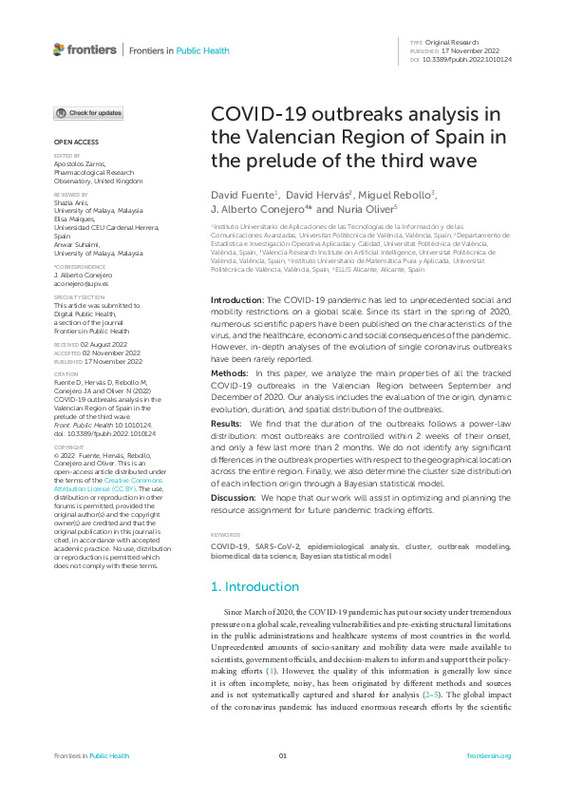JavaScript is disabled for your browser. Some features of this site may not work without it.
Buscar en RiuNet
Listar
Mi cuenta
Estadísticas
Ayuda RiuNet
Admin. UPV
Desde el lunes 3 y hasta el jueves 20 de marzo, RiuNet funcionará en modo de solo lectura a causa de su actualización a una nueva versión.
COVID-19 outbreaks analysis in the Valencian Region of Spain in the prelude of the third wave
Mostrar el registro completo del ítem
Fuente, D.; Hervás-Marín, D.; Rebollo Pedruelo, M.; Conejero, JA.; Oliver, N. (2022). COVID-19 outbreaks analysis in the Valencian Region of Spain in the prelude of the third wave. Frontiers in Public Health. 10:1-14. https://doi.org/10.3389/fpubh.2022.1010124
Por favor, use este identificador para citar o enlazar este ítem: http://hdl.handle.net/10251/194586
Ficheros en el ítem
Metadatos del ítem
| Título: | COVID-19 outbreaks analysis in the Valencian Region of Spain in the prelude of the third wave | |
| Autor: | Oliver, Nuria | |
| Entidad UPV: |
|
|
| Fecha difusión: |
|
|
| Resumen: |
[EN] IntroductionThe COVID-19 pandemic has led to unprecedented social and mobility restrictions on a global scale. Since its start in the spring of 2020, numerous scientific papers have been published on the characteristics ...[+]
|
|
| Palabras clave: |
|
|
| Derechos de uso: | Reconocimiento (by) | |
| Fuente: |
|
|
| DOI: |
|
|
| Editorial: |
|
|
| Versión del editor: | https://doi.org/10.3389/fpubh.2022.1010124 | |
| Coste APC: |
|
|
| Código del Proyecto: |
|
|
| Agradecimientos: |
NO has been partially supported by funding received by the ELLIS Unit Alicante Foundation from the Regional Government of Valencia in Spain (Generalitat Valenciana, Conselleria d'Innovacio, Universitats, Ciencia i Societat ...[+]
|
|
| Tipo: |
|









